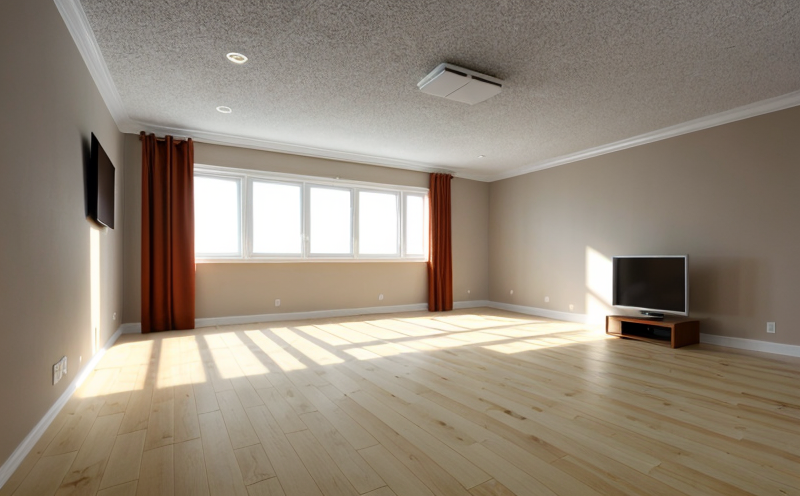ISO 3744 Sound Power Testing in Free Field over Reflecting Plane
The ISO 3744 standard is one of several internationally recognized standards used to measure sound power levels in a free-field environment, where the source is placed over a reflecting plane. This method ensures that the measurements are accurate and consistent across different testing facilities, making it ideal for assessing the performance of various acoustic devices and materials.
Sound power level (LW) is an important parameter when evaluating noise sources like fans, pumps, and other machinery in buildings or industrial settings. It allows for a more comprehensive understanding of the source characteristics compared to sound pressure levels, which are influenced by the surrounding environment and can vary significantly depending on location within a room.
The free-field approach overcomes some limitations associated with traditional methods by providing direct measurements without interference from reflective surfaces such as walls or ceilings. This makes it particularly useful for testing large sources where reflections might distort results obtained in typical laboratory settings.
For effective implementation of this standard, certain conditions must be met during the test procedure to ensure valid and reliable data collection. These include proper placement of the sound source and microphone array relative to the reflecting plane, ensuring that there are no obstructions or irregularities within the defined measurement zone. Additionally, the ambient noise level should be controlled so as not to mask the signals being measured.
Understanding these requirements is crucial for both new testers starting with ISO 3744 and experienced professionals looking to refine their techniques. By adhering strictly to the specified procedures outlined in the standard, you can achieve consistent results that are comparable across different laboratories worldwide.
| Applied Standards | Description |
|---|---|
| ISO 3744:2019 | This international standard specifies procedures for determining sound power levels in free-field conditions over a reflecting plane. It covers both single and multi-source scenarios. |
| IEC TC 43 | The International Electrotechnical Commission Technical Committee responsible for developing standards related to electrical, electronic, and associated technology including acoustics. |
| Use Cases and Application Examples |
|---|
| Testing industrial machinery such as compressors or ventilation systems in open spaces to evaluate their overall noise contribution. |
| Evaluating the sound insulation performance of walls and partitions by placing loudspeakers on one side while measuring acoustic parameters on the other side of the partition. |
| Assessing HVAC units installed outdoors to determine compliance with local regulations regarding acceptable noise levels in residential areas. |
| Characterizing sound sources used in research and development activities, helping researchers understand how different design changes impact overall sound output. |
Applied Standards
- ISO 3744:2019: Specifies procedures for determining sound power levels in free-field conditions over a reflecting plane. Covers both single and multi-source scenarios.
- IEC TC 43: Responsible for developing standards related to electrical, electronic, and associated technology including acoustics.
Quality and Reliability Assurance
- Precision of instruments used in testing must be verified periodically against national or international calibration standards.
- Data acquisition systems should undergo regular maintenance to ensure accurate recording and storage of sound pressure levels.
- Test personnel need ongoing training to stay updated on best practices and any changes made to the standard.
Use Cases and Application Examples
| Use Case |
|---|
| Testing industrial machinery such as compressors or ventilation systems in open spaces to evaluate their overall noise contribution. |
| Evaluating the sound insulation performance of walls and partitions by placing loudspeakers on one side while measuring acoustic parameters on the other side of the partition. |
| Assessing HVAC units installed outdoors to determine compliance with local regulations regarding acceptable noise levels in residential areas. |
| Characterizing sound sources used in research and development activities, helping researchers understand how different design changes impact overall sound output. |
| Application Examples |
|---|
| Evaluating the efficiency of noise control measures implemented around airports or highways. |
| Determining compliance with environmental protection laws concerning industrial noise emissions. |
| Supporting forensic investigations involving sound source identification in crime scenes or accident sites. |





